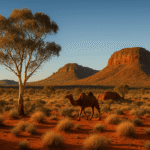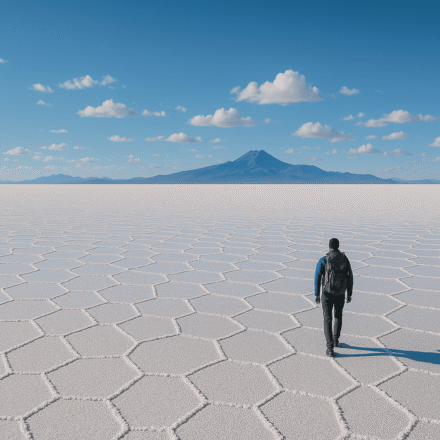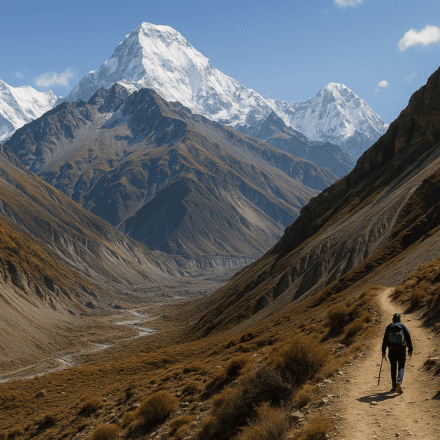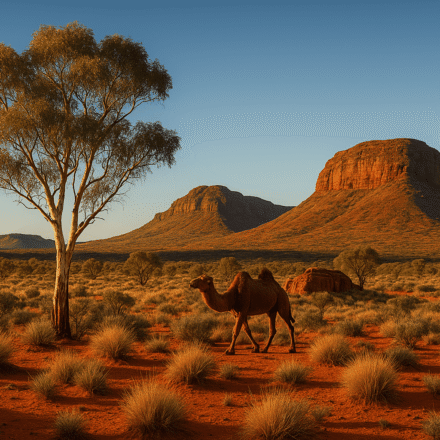Discover the Magic of the Mongolian Gobi Desert: Asia’s Ultimate Adventure Destination
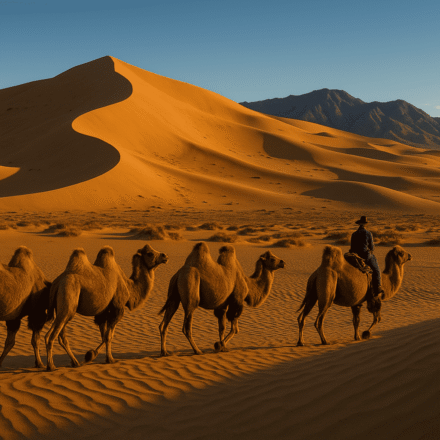
The Mongolian Gobi Desert stretches across 1.3 million square kilometers of southern Mongolia and northern China, making it Asia’s largest desert and the sixth largest worldwide. Unlike typical deserts, the Gobi is primarily a “cold desert” with extreme temperature variations and diverse landscapes that go far beyond sand dunes. This unique environment offers travelers an unforgettable journey through one of Earth’s most fascinating ecosystems.
Table Of Content
- The Breathtaking Landscapes of the Mongolian Gobi
- Geographic Features and Location
- Beyond Sand Dunes: The Diverse Terrain
- Must-See Natural Wonders
- Surviving Extreme Weather: The Gobi’s Remarkable Climate
- Temperature Extremes Throughout the Year
- Understanding Desert Aridity
- Optimal Visiting Times
- Desert Life: Surprising Biodiversity in Harsh Conditions
- Wildlife Adaptations in the Desert
- Endangered Species of the Mongolian Gobi
- Desert Plant Communities
- Cultural Heritage: Human Life in the Desert
- Nomadic Traditions and Lifestyles
- Historical Significance
- Modern Challenges for Desert Communities
- Planning Your Gobi Desert Adventure
- Tour Options and Pricing
- Essential Packing and Preparation
- Unforgettable Desert Experiences
- Environmental Challenges and Conservation
- Climate Change Impacts
- Protection Efforts
- Sustainable Tourism
- Frequently Asked Questions About the Gobi Desert
- Experience the Timeless Magic of Mongolia’s Gobi Desert
The Breathtaking Landscapes of the Mongolian Gobi
The word “Gobi” comes from the Mongolian word “Govi,” meaning a dry landscape with characteristic arid vegetation. This vast desert presents a stunning variety of terrain types that surprise most first-time visitors.
Geographic Features and Location
The Gobi Desert spans:
- Southern Mongolia and northern China
- Approximately 1,600 km long and 800 km wide
- Five distinct eco-regions with varying elevations
- Boundaries formed by the Altai Mountains, Hangayn Mountains, and Da Hinggan Range
Beyond Sand Dunes: The Diverse Terrain
Contrary to popular belief, only about 5% of the Gobi Desert consists of sand. The landscape includes:
- Barren rocky plains
- Gravel-covered expanses
- Rugged mountain ranges
- Deep canyons
- Sparse grasslands and shrublands
This diversity creates a patchwork of environments that support surprising biodiversity despite harsh conditions.
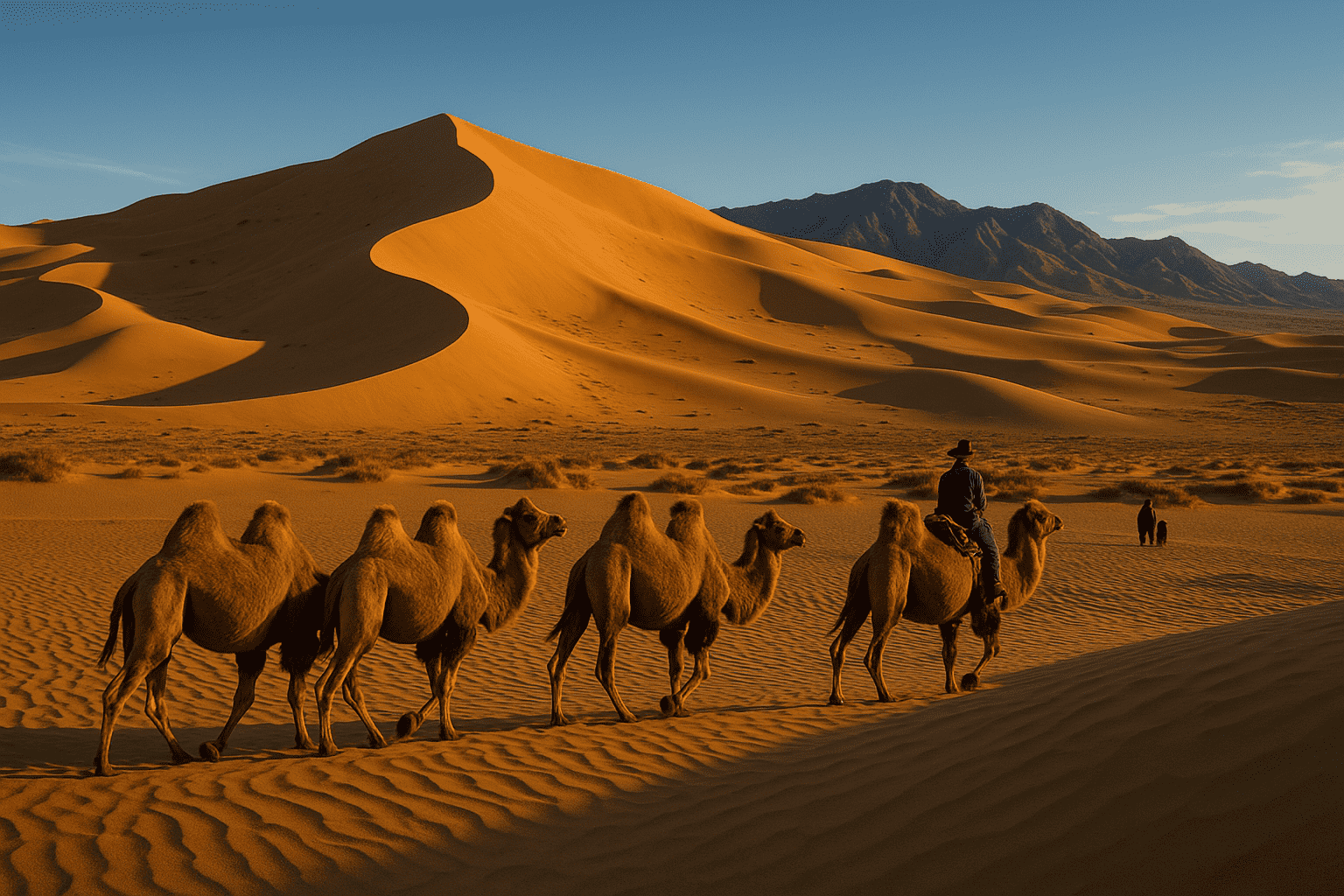
Must-See Natural Wonders
The most captivating features of the Mongolian Gobi include:
- Khongor Sand Dunes – These “Singing Dunes” stretch over 180 kilometers and reach heights up to 300 meters, creating eerie sounds as wind shifts the sand
- Flaming Cliffs (Bayanzag) – Famous for dinosaur fossil discoveries, these red sandstone formations glow brilliantly at sunset
- Gobi Gurvan Saikhan National Park – Mongolia’s largest national park featuring ice formations that can persist even in summer months
Surviving Extreme Weather: The Gobi’s Remarkable Climate
The Gobi Desert presents one of Earth’s most challenging climate environments, with dramatic seasonal and daily temperature fluctuations.
Temperature Extremes Throughout the Year
The Gobi’s continental climate pattern features remarkable temperature variations:
| Season | Temperature Range | Characteristics |
|---|---|---|
| Winter | -40°C to -15°C | Bitter cold, strong winds |
| Spring | 0°C to 25°C | Unpredictable, dust storms |
| Summer | 25°C to 45°C | Hot days, cooler nights |
| Fall | -5°C to 25°C | Gradually cooling |
Daily temperature swings can be equally dramatic, with differences of up to 35°C between day and night temperatures.
Understanding Desert Aridity
The Gobi Desert’s extreme dryness results from:
- Rain shadow effect of the Himalayan mountains
- Continental air masses blocking moisture
- High evaporation rates from intense sun and winds
Annual precipitation averages between 40-200mm, with most regions receiving less than 100mm yearly, making the Gobi one of Earth’s driest places.
Optimal Visiting Times
The best times to experience the Mongolian Gobi are:
- May to June: Pleasant temperatures, flowering plants
- July to August: Peak tourist season, warmest weather
- September to October: Cooling temperatures, fewer tourists
- November to April: Extremely cold, limited tour availability
Early June offers comfortable temperatures without peak summer crowds, while September provides clear skies and excellent photography conditions.
Desert Life: Surprising Biodiversity in Harsh Conditions
Despite challenging conditions, the Gobi Desert supports remarkable biodiversity with species uniquely adapted to extreme environments.
Wildlife Adaptations in the Desert
Animals of the Gobi have developed specialized survival mechanisms:
- Water conservation systems
- Nocturnal lifestyles avoiding daytime heat
- Physical adaptations for desert survival
- Strategic migration patterns
The iconic Bactrian camel demonstrates these adaptations perfectly – able to drink 120 liters of water in minutes then survive weeks without more.
Endangered Species of the Mongolian Gobi
The desert is home to several threatened species:
- Wild Bactrian camels – Only about 950 remain in the wild
- Gobi bears (mazaalai) – Perhaps the rarest bear worldwide with fewer than 40 individuals
- Snow leopards – Elusive predators facing habitat loss
- Mongolian wild ass (khulan) – Threatened by hunting and competition with livestock
Other notable wildlife includes black-tailed gazelles, marbled polecats, and numerous bird species adapted to desert conditions.
Desert Plant Communities
The Gobi’s plant life includes:
- Drought-resistant shrubs
- Saxaul forests that stabilize soil
- Spring-blooming wildflowers after rainfall
- Medicinal plants like Allium and Nitraria species
This vegetation creates a mosaic of true desert, desert grasslands, and steppe environments that shift based on elevation, soil type, and water availability.
Cultural Heritage: Human Life in the Desert
The Gobi’s vast expanse has shaped human history and culture for thousands of years, creating a rich tapestry of traditions and adaptations.
Nomadic Traditions and Lifestyles
For centuries, nomadic herders have mastered desert survival:
- Seasonal migration following grazing patterns
- Traditional ger (yurt) dwellings designed for mobility
- Sustainable water management techniques
- Deep knowledge of the landscape passed through generations
Population density remains extremely low at about 0.3 people per square kilometer, preserving traditional ways of life despite modern pressures.
Historical Significance
The Gobi Desert has played a crucial role in Asian history:
- Ancient Silk Road routes crossed its expanses
- Human migrations have traversed the region for 5,000+ years
- Central region of the Mongol Empire (1206-1294)
- Site of significant paleontological discoveries including dinosaur fossils
Archaeological finds continue to reveal the desert’s importance in human cultural exchange and development across millennia.
Modern Challenges for Desert Communities
Today’s Gobi communities face significant changes:
- Shifting climate patterns affecting traditional herding
- Increased mining operations disrupting ecosystems
- Economic transition impacts (livestock increased from 25 to 66 million animals since 1990)
- Balancing traditional practices with modern development
These pressures create both challenges and opportunities for communities maintaining their cultural heritage while adapting to contemporary realities.
Planning Your Gobi Desert Adventure
Visiting the Gobi requires careful planning and preparation to ensure a safe, enjoyable experience in this extreme environment.
Tour Options and Pricing
Tour options vary widely in price and comfort:
| Tour Type | Price Range (Per Person/Day) | Experience Level |
|---|---|---|
| Budget Tours | $60-100 | Basic accommodation, shared transportation |
| Mid-Range Tours | $100-300 | Private vehicles, better accommodation |
| Luxury Tours | $300-1000+ | Premium experience, exclusive access |
A quality 7-day tour typically costs between $200-300 per day including vehicle, driver, guide, meals, and accommodation in ger camps.
Essential Packing and Preparation
Important items for Gobi travel include:
- Layered clothing for extreme temperature changes
- High-SPF sunscreen and wide-brimmed hat
- Dust mask or bandana for windstorms
- Water bottles and purification options
- Camera with extra batteries and storage
- Basic first aid kit and personal medications
Physical preparation helps too – activities like climbing sand dunes require reasonable fitness levels.
Unforgettable Desert Experiences
Don’t miss these quintessential Gobi activities:
- Watching sunrise or sunset at the Khongor Sand Dunes
- Riding Bactrian camels with local guides
- Searching for fossils near the Flaming Cliffs
- Staying in traditional ger camps
- Stargazing in one of Earth’s least light-polluted areas
- Meeting nomadic families (with proper cultural respect)
Environmental Challenges and Conservation
The Gobi ecosystem faces numerous threats despite its remote location and harsh conditions.
Climate Change Impacts
Research indicates several concerning trends:
- Accelerated desertification in certain regions
- Changing precipitation patterns
- More frequent dust storms
- Shifting wildlife migrations
Interestingly, satellite data between 2000 and 2012 showed some contraction of the desert in certain areas, though overall environmental pressure continues.
Protection Efforts
Several initiatives aim to preserve the Gobi:
- Gobi Gurvan Saikhan National Park (established 1993)
- Great Gobi Strictly Protected Area
- International conservation partnerships
- Community-based conservation programs
These protected areas cover significant portions of the Mongolian Gobi but face enforcement challenges due to the vast territory.
Sustainable Tourism
Responsible visitors can help preserve the Gobi by:
- Choosing tour operators with strong environmental policies
- Following “leave no trace” principles
- Supporting local conservation initiatives
- Respecting wildlife and cultural sites
- Minimizing water usage
Frequently Asked Questions About the Gobi Desert
What makes the Gobi Desert different from other deserts?
The Gobi is a “cold desert” with extreme temperature variations between seasons and between day and night. Unlike sand-dominated deserts, only about 5% of the Gobi consists of sand dunes, with most being rocky terrain, gravel plains, and mountains.
When is the best time to visit the Mongolian Gobi?
The optimal visiting window runs from May to October. June offers pleasant temperatures and flowering plants, while July and August are warmest but busiest. September and early October provide clear skies and fewer tourists before winter cold arrives.
What wildlife might I see in the Gobi Desert?
Visitors might spot Bactrian camels, black-tailed gazelles, Mongolian wild ass, vultures, and smaller mammals. The endangered Gobi bear, snow leopard, and wild Bactrian camel are extremely rare sightings.
How do people live in such a harsh environment?
Nomadic herders have adapted over thousands of years, developing specialized knowledge of seasonal water sources, grazing areas, and weather patterns. They live in portable ger dwellings and move their livestock seasonally to find adequate grazing.
Is the Gobi Desert growing or shrinking?
Recent research using satellite data has shown some contraction of the Gobi Desert in certain areas between 2000-2012. However, climate change, overgrazing, and human activities continue to affect the desert boundaries in complex ways.
What should I pack for a Gobi Desert trip?
Essential items include layered clothing for temperature extremes, sun protection, a dust mask for windstorms, sturdy shoes for hiking, personal medications, and a good camera to capture the spectacular landscapes.
Experience the Timeless Magic of Mongolia’s Gobi Desert
The Mongolian Gobi Desert represents one of Earth’s most extreme yet captivating environments. From diverse landscapes and remarkable wildlife to rich cultural heritage and stunning natural beauty, the Gobi offers experiences unavailable anywhere else.
A journey through this magnificent region transforms your perspective on deserts and leaves you with profound appreciation for both nature’s resilience and human adaptability in harsh environments.
If you’re seeking adventure beyond ordinary travel experiences, start planning your Gobi expedition today. Connect with reputable tour operators emphasizing environmental responsibility and cultural respect. Whether climbing singing sand dunes, watching sunset paint the Flaming Cliffs, or sharing tea with nomadic herders, the Gobi Desert will create memories to last a lifetime.
The ancient landscapes of the Gobi have witnessed thousands of years of human history – now it’s your turn to explore this remarkable wilderness. Book your Mongolian Gobi adventure today and discover why this extraordinary desert continues to captivate travelers from around the world!



